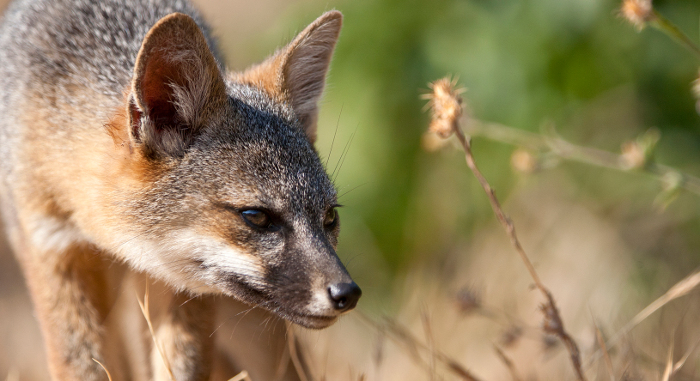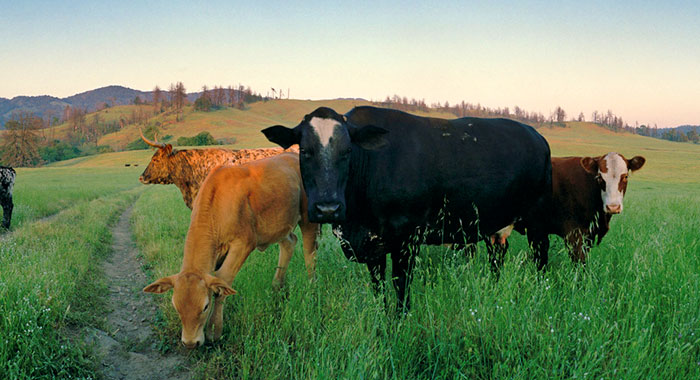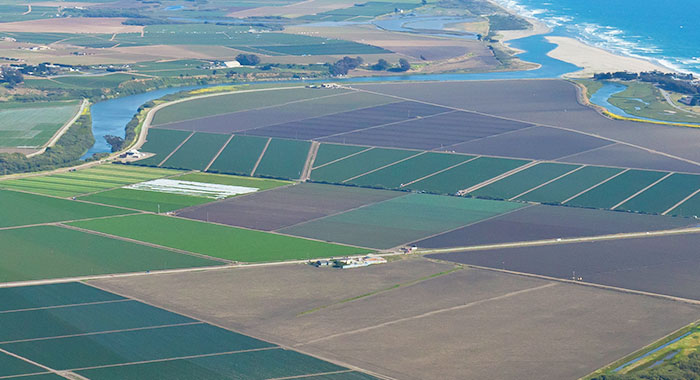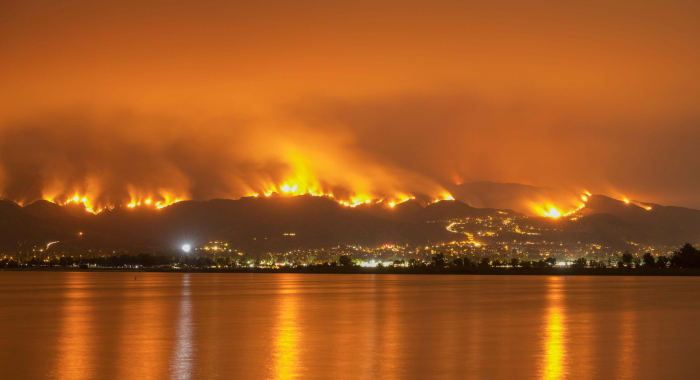In California, a day’s drive can take a visitor from record-setting desert heat to glaciated peaks to temperate rainforests with the world’s tallest trees. This astounding climatic and landscape diversity has helped create a biodiversity hotspot. California is also an economic hotspot – the 6th largest economy in the world – and is home to nearly 40 million people. The demand for land for new development and farms, along with accelerating climate change, puts tremendous stress on ecosystems, and the benefits they provide.
The state’s legacy of conservation has created a network of natural and working lands that benefit people by supplying clean water, capturing carbon, and directly contributing to the state’s economic and cultural vitality through recreation, tourism, and agricultural production. Conservancy scientists work across the spectrum of ecosystem types and human land uses, to advance conservation goals that also contribute to the well-being of people in those places.






Michael Clifford, Sophie Parker, Matt Rader, Lydia Bailey, Naomi Fraga, Chris Hass, Estella Hernandez, Jan Kempf, Lois Merkler, Michael Swink
The Amargosa River supports one of the most outstanding suites of endemic and imperiled species in the world. In 2019, TNC acquired the Atwood Preserve in the river’s headwaters, the…William T. Bean, H. Scott Butterfield, Craig Fiehler, David Hacker, Jeanette K. Howard, Russell Namitz, Brandon Swanson, Thomas J. Batter
TNC launched a Water for Wildlife project motivated by understanding the importance of standing free water across the season for wildlife in general, but most importantly for those species sensitive…Michael J. Clifford, Sophie S. Parker, Brian S. Cohen, Elaine York, Joel Tuhy
This paper provides an assessment of changes in the conservation value of lands in the Mojave Desert of Nevada and Utah resulting from renewable energy and other development between 2010 and 2018. The…The Nature Conservancy with Willis Towers Watson, Sarah Heard
California has the highest wildfire risk in the US, and climate change will continue to exacerbate the risk, at least in the foreseeable future. As a result, California is facing an insurance crisis,…Trish Smith, Cheryl Brehme, Jill Carpenter, Nancy Frost, Megan Jennings, Barbara Kus, Scott Quinnell, Spring Strahm, T. Winston Vickers
The Nature Conservancy and the California Department of Transportation are planning 3 wildlife crossing infrastructure projects along a 3-mile stretch of Interstate 15 (I-15) in the Santa Ana-Palomar…Adam H. Love, Andy Zdon, Naomi S. Fraga, Brian Cohen, Maura Palacios Mejia, Rachel Maxwell, Sophie Parker
This paper presents results from the Mojave Desert Springs research project. The authors present a comprehensive statistical analysis of similarities between California desert springs. An observed…Kristen E. Dybala, Kristin. A. Sesser, Matthew E. Reiter, W. David Shuford, Gregory. H. Golet, Catherine Hickey, and Thomas Gardali
Conserving birds is a key goal for management of the Sacramento–San Joaquin Delta ecosystem, one of the largest estuaries on the Pacific Coast, and is likely to have effects for populations well…Michele Romolini, Sophie S. Parker, Gregory B. Pauly, Eric M. Wood
This editorial introduces a group of 11 articles published as part of an organized research topic in the Urban Greening section of the journal Frontiers in Sustainable Cities. In contrast with the…Benjamin P. Bryant, Tessa Maurer, Phillip C. Saksa, John D. Herman, Kristen N. Wilson, Edward Smith
The authors of this study analyzed how wildfires and forest restoration, specifically thinning and prescribed fire being implemented in the French Meadows Project in the central Sierra Nevada, could…Mark G. Anderson, Melissa Clark, Arlene P. Olivero, and D. Richard Cameron
In response to biodiversity loss, scientists have called for the protection of well-connected systems of protected areas covering 30 to 50% of the planet. However, as climate change drives shifts in…Kristina Kreter, Shona Ganguly, Rowan Roderick-Jones, and Kelsey Jessup
New strategies to address urban runoff management with nature-based approaches offer promising solutions to alleviating climate change impacts—like urban heat, water shortages, and…Mario Zuliani, Nargol Ghazian, Malory Owen, Michael F. Westphal, H. Scott Butterfield, Christopher J. Lortie
As The Nature Conservancy embarks on restoration planning for its Strategic Restoration Strategy, it needs detailed information on the importance of shrubs to a suite of conservation targets,…The Nature Conservancy, radbridge, Earth Economics
FEMA increasingly recognizes and emphasizes the role of nature-based solutions (NBS) for building community resilience to hazards like flood, wildfire, and drought, and the agency has made remarkable…Taylor-Burns, R., Heard, S., Beck, M. W.
There is growing evidence for the beneficial role that wetlands can play in reducing flood risk, but in many urban estuaries, coastal development has resulted in dramatic habitat loss and…Butterfield, H.S., J. Howard, Z. Principe, E. Inlander, S. Sweet, A. Craig, R. Mason, J. Knapp , M. Katkowski
For over 300 years, cattle and sheep have been grazed in California, from the Rancho era continuing to the present day. The Nature Conservancy has a long history in California and across the western…Jasmine Lu, Emily E. Hamblen, Lara J. Brenner, Julie L. King, Bridgett M. VonHoldt, Alexandra L. DeCandia
Over 50% of federally threatened Santa Catalina Island foxes (Urocyon littoralis catalinae) develop life-threatening ceruminous gland tumors in their ear canals. Previous work suggests that tumors may…